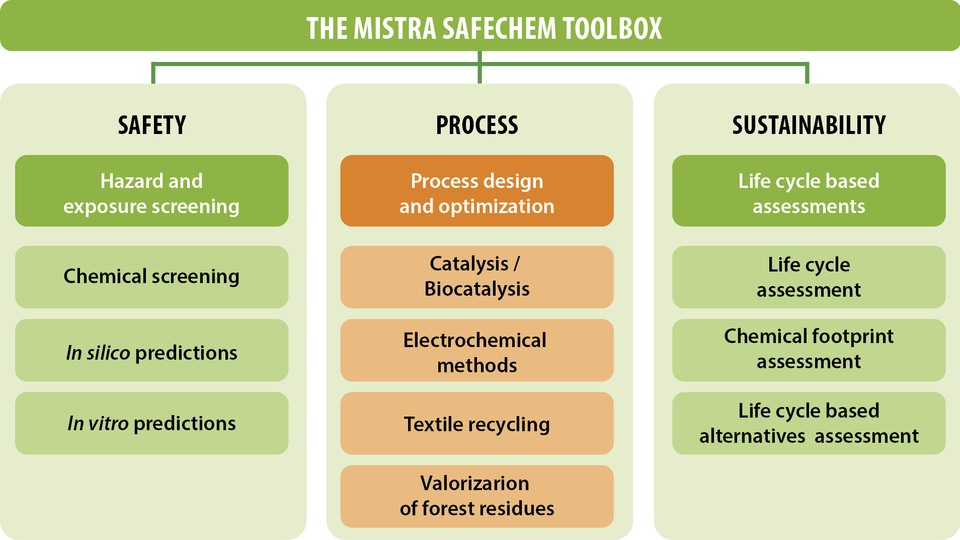
Toolbox: Process design and optimization
In the pursuit of enhanced safety and sustainability in the production of chemicals and materials, Mistra SafeChem is actively working on developing innovative tools and methods to achieve the following objectives.
Replacement of virgin resources with recycled materials in the regeneration of textile fibers through cutting-edge spinning technologies. The primary emphasis lies in strengthening the mechanical properties of recycled fibers by incorporating novel, eco-friendly bio-based additives.
By incorporating novel fractionation technologies, the toolkit enables the substitution of virgin resources in primary production with secondary products or waste materials. This transformation primarily targets forestry and agricultural by-products or waste streams. The extracted fractions are then customised and recombined through sustainable chemistry approaches, yielding innovative composite materials.
Pioneering novel catalytic methods, including both enzymatic and metal-based approaches, to produce organic compounds of significant utility in various industries, particularly the pharmaceutical sector. The toolkit harnesses reagents and reaction conditions in line with the principles of green chemistry, with an emphasis on optimising atom economy, minimising waste, and using non-hazardous reagents or solvents.
The processes and optimization approaches use performance, toxicity and life cycle impact assessments as decision-making tools.
-
2024-04-03 | newsFour more years – Mistra SafeChem gets go-ahead for second phase
-
2024-03-28 | newsThe 2023 Mistra SafeChem annual report focuses on more than just one year
-
2024-03-21 | newsSETAC conference on LCA will be held in Gothenburg
-
2024-02-27 | newsMistra SafeChem researchers keynote speakers at large conference on SSbD
-
2024-02-16 | newsThe Mistra SafeChem cosmetics study specially invited to EU workshop on SSbD



